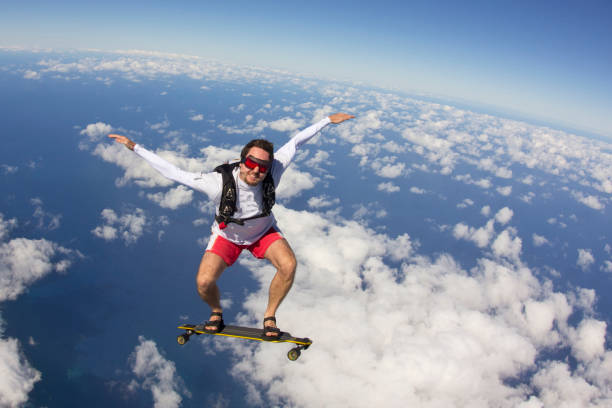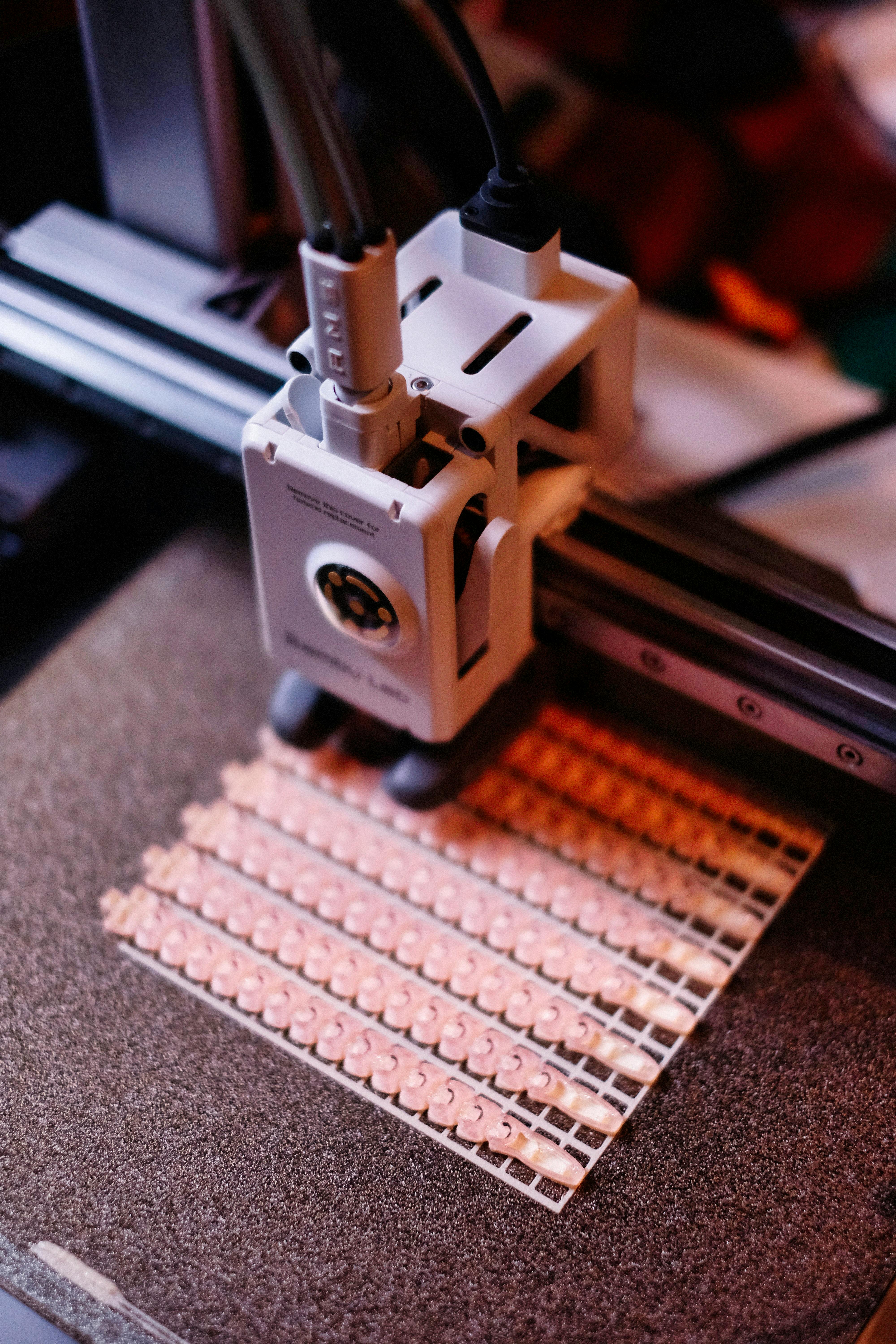Wingsuit Flying: Pushing the Boundaries of Human Flight
The rush of wind, a bird's-eye view of sprawling landscapes, and the exhilarating sensation of soaring through the air – welcome to the world of wingsuit flying. This extreme sport, which combines elements of skydiving and BASE jumping, has captivated thrill-seekers and aviation enthusiasts alike. As athletes don specially designed suits that inflate with air to create lift and forward motion, they experience a unique form of human flight that pushes the limits of what's possible in the sky.

In the 1990s, modern wingsuit design began to take shape. Patrick de Gayardon, a French skydiver, is credited with developing the first successful wingsuit prototype. His design featured fabric webbing between the arms and legs, creating an airfoil shape that allowed for increased glide ratio and maneuverability.
Following de Gayardon’s pioneering work, other designers and skydivers continued to refine and improve wingsuit technology. In 1999, Jari Kuosma and Robert Pečnik founded BirdMan International, the first company to manufacture and sell commercial wingsuits. This marked the beginning of wingsuit flying as a recognized discipline within skydiving and BASE jumping communities.
The Science Behind Wingsuit Flight
Wingsuit flying operates on the principles of aerodynamics, utilizing the same forces that allow airplanes to stay aloft. The key to wingsuit flight lies in the suit’s design, which creates an airfoil shape when inflated during freefall.
The wingsuit consists of fabric membranes between the arms and torso, and between the legs. When the jumper spreads their arms and legs, these membranes fill with air, creating a wing-like surface. This increased surface area generates lift, allowing the flyer to glide forward instead of falling straight down.
The physics of wingsuit flight involves a delicate balance between four forces:
-
Gravity: The downward force that pulls the flyer towards the earth.
-
Lift: The upward force generated by the wingsuit’s airfoil shape.
-
Drag: The resistance created by the air as the flyer moves through it.
-
Thrust: The forward momentum created by the flyer’s body position and the suit’s design.
By manipulating their body position and the suit’s shape, wingsuit pilots can control their glide ratio, speed, and direction. Advanced flyers can achieve impressive glide ratios, traveling up to 3 meters horizontally for every 1 meter of vertical descent.
Training and Safety in Wingsuit Flying
Wingsuit flying is an extreme sport that requires extensive training, experience, and a deep understanding of safety protocols. Most wingsuit organizations and dropzones have strict requirements for individuals who wish to begin wingsuit flying.
Typically, aspiring wingsuit pilots must have:
-
A minimum of 200 skydives
-
Demonstrated proficiency in belly flying, tracking, and canopy control
-
Completed a First Flight Course (FFC) with a certified wingsuit instructor
The First Flight Course is a comprehensive training program that covers:
-
Equipment familiarization and safety checks
-
Body position and flight techniques
-
Emergency procedures and deployment methods
-
Understanding weather conditions and jump planning
Even after completing the FFC, wingsuit pilots continue to progress through various levels of difficulty, gradually increasing their skills and attempting more challenging flights.
Safety remains paramount in wingsuit flying. Jumpers must be acutely aware of their surroundings, altitude, and proximity to terrain or other flyers. They must also maintain strict equipment maintenance and adhere to proper exit, flight, and landing procedures.
Competitive Wingsuit Flying
As wingsuit flying has grown in popularity, competitive events have emerged to showcase the skills of top pilots. These competitions typically fall into two main categories:
-
Performance Flying: Focuses on achieving the best possible glide ratio, speed, or time aloft.
-
Acrobatic Flying: Emphasizes precise maneuvers, formations, and artistic expression in the air.
One of the most prestigious wingsuit competitions is the Wingsuit World Championships, organized by the Fédération Aéronautique Internationale (FAI). This event features both performance and acrobatic categories, attracting the world’s best wingsuit pilots.
Performance events often use GPS tracking devices to measure a pilot’s glide ratio, horizontal distance covered, and average speed. Acrobatic competitions are judged based on the difficulty, execution, and creativity of maneuvers performed during the flight.
Other notable wingsuit competitions include:
-
The World Wingsuit League (WWL): Focuses on proximity flying, where pilots navigate through challenging terrain or obstacles.
-
Red Bull Aces: A wingsuit racing competition that features multiple pilots competing head-to-head through an aerial slalom course.
These events not only showcase the incredible skills of top wingsuit pilots but also drive innovation in suit design and flying techniques.
Technological Advancements in Wingsuit Design
Since the early days of modern wingsuiting, there have been significant advancements in suit design and materials. These improvements have led to increased performance, safety, and accessibility for pilots of varying skill levels.
Key areas of technological advancement include:
-
Materials: Modern wingsuits use high-performance fabrics that are lightweight, durable, and resistant to tearing. Some suits incorporate ripstop nylon or proprietary materials designed specifically for wingsuiting.
-
Airfoil Shape: Designers have refined the wing profile to optimize lift and reduce drag. Some suits now feature multiple chambers or cells that inflate independently, allowing for better control and stability.
-
Arm and Leg Wing Design: The shape and size of the arm and leg wings have been optimized to provide the best balance between lift, maneuverability, and stability.
-
Inlets and Vents: Strategically placed inlets ensure proper inflation of the suit, while vents allow for controlled deflation and improved stability during deployment.
-
Customization: Many manufacturers now offer custom-fitted suits, tailored to the individual pilot’s body measurements and flying style.
-
Safety Features: Some suits incorporate emergency cutaway systems or quick-release zippers to aid in emergency situations.
These technological advancements have not only improved performance but have also made wingsuit flying more accessible to a wider range of skydivers. Entry-level suits now offer improved stability and ease of use, allowing newer pilots to progress safely through the sport.
The Future of Wingsuit Flying
As wingsuit technology continues to evolve and pilots push the boundaries of what’s possible, the future of the sport looks exciting and full of potential. Some areas of development and trends to watch include:
-
Improved Glide Ratios: Ongoing research in aerodynamics and materials science may lead to suits with even better glide performance, potentially allowing for longer flights and more complex maneuvers.
-
Enhanced Safety Systems: Future wingsuits may incorporate advanced safety features such as automated deployment systems or integrated altitude awareness devices.
-
Virtual Reality Training: VR technology could be used to create realistic wingsuit simulators, allowing pilots to practice techniques and emergency procedures in a safe, controlled environment.
-
Eco-Friendly Materials: As sustainability becomes increasingly important, wingsuit manufacturers may explore more environmentally friendly materials and production methods.
-
Integration with Other Technologies: We may see the development of “smart” wingsuits that incorporate heads-up displays, real-time performance metrics, or even augmented reality features.
-
Expanded Competition Formats: New types of wingsuit competitions may emerge, potentially incorporating elements of other extreme sports or utilizing advanced tracking technologies for more precise scoring.
-
Medical and Scientific Research: The unique physiological demands of wingsuit flying may lead to increased research into human performance at high altitudes and under extreme conditions.
The Environmental Impact and Ethical Considerations
As wingsuit flying continues to grow in popularity, it’s important to consider the environmental impact and ethical implications of the sport. While wingsuiting itself has a relatively low direct environmental impact compared to some other extreme sports, there are still concerns to address:
-
Access to Natural Areas: Wingsuit BASE jumping often involves accessing remote or protected natural areas. This can potentially disturb local ecosystems or conflict with conservation efforts.
-
Carbon Footprint: The use of aircraft for skydiving-based wingsuit flights contributes to carbon emissions. Some dropzones and events are exploring ways to offset this impact through carbon credits or sustainable practices.
-
Wildlife Disturbance: Low-flying wingsuiters, particularly in proximity flying, may disturb local wildlife. Responsible pilots and event organizers work to minimize this impact by carefully selecting flight paths and adhering to local regulations.
-
Search and Rescue Resources: In the event of accidents in remote areas, search and rescue operations can be resource-intensive and potentially impact local environments.
To address these concerns, many wingsuit organizations and events are implementing sustainability initiatives and working closely with local communities and environmental groups. Some strategies include:
-
Partnering with conservation organizations to support local environmental projects
-
Implementing strict guidelines for flights in sensitive areas
-
Educating pilots about responsible environmental practices
-
Exploring alternative, more sustainable methods of reaching jump altitudes
Ethically, the high-risk nature of wingsuit flying also raises questions about the responsibility of participants, organizers, and governing bodies. Balancing the pursuit of personal achievement and pushing human limits with safety and risk management remains an ongoing discussion within the wingsuiting community.
The Psychology of Wingsuit Flying
The mental aspects of wingsuit flying are as crucial as the physical skills required. The sport attracts individuals who seek intense experiences and are willing to confront significant risks. Understanding the psychological factors at play can provide insights into why people are drawn to this extreme activity and how they manage the associated stress and fear.
Key psychological aspects of wingsuit flying include:
-
Risk Perception and Management: Wingsuit pilots must accurately assess and manage risks associated with each flight. This involves a complex interplay of experience, knowledge, and decision-making skills.
-
Flow State: Many wingsuit flyers report experiencing a state of “flow” during flights, characterized by intense focus, loss of self-consciousness, and a altered sense of time.
-
Stress Response: The high-stakes nature of wingsuit flying triggers the body’s stress response. Pilots must learn to manage this physiological reaction to maintain clear thinking and precise control.
-
Fear Management: Successful wingsuit pilots develop strategies to manage fear, transforming it from a paralyzing force into a tool for heightened awareness and performance.
-
Motivation and Goal-Setting: Understanding what drives individuals to pursue wingsuit flying can provide insights into extreme sport psychology and human motivation.
-
Group Dynamics: The close-knit nature of the wingsuit community plays a significant role in safety culture, skill development, and the overall experience of the sport.
Research in this area not only contributes to improving safety in wingsuit flying but also offers valuable insights into human performance under extreme conditions, potentially benefiting fields such as aviation, emergency response, and high-stress occupations.
The Cultural Impact of Wingsuit Flying
Wingsuit flying has made a significant impact on popular culture, inspiring awe and capturing the imagination of people around the world. Its influence can be seen in various aspects of media, entertainment, and even fashion:
-
Film and Television: Wingsuit flying has been featured in numerous action films, documentaries, and television shows, often showcasing spectacular aerial stunts and breathtaking scenery.
-
Social Media and Online Content: Videos of wingsuit flights, especially proximity flying, have gone viral on platforms like YouTube and Instagram, introducing the sport to millions of viewers.
-
Advertising and Marketing: The visual appeal and excitement of wingsuit flying have made it a popular choice for advertising campaigns, particularly for products associated with adventure and high performance.
-
Video Games: Several video games have incorporated wingsuit flying as a gameplay element, allowing players to experience a virtual version of the sport.
-
Fashion and Design: The sleek, aerodynamic aesthetic of wingsuits has influenced trends in sportswear and even high fashion.
-
Adventure Tourism: While not accessible to most tourists, the allure of wingsuit flying has contributed to the growth of extreme sports tourism in certain regions.
-
Artistic Expression: Some wingsuit pilots view their flights as a form of aerial art, using the sky as their canvas and their bodies as the brush.
The cultural impact of wingsuit flying extends beyond mere spectacle, often sparking discussions about human potential, risk-taking, and our relationship with the natural world. It serves as a powerful symbol of human ingenuity and the enduring desire to push the boundaries of what’s possible.
Conclusion
Wingsuit flying represents a remarkable fusion of human ambition, technological innovation, and the eternal dream of flight. From its early, dangerous beginnings to its current status as a recognized extreme sport, wingsuiting has continually pushed the boundaries of what’s possible in the air.
As the sport continues to evolve, it faces challenges in balancing progression with safety, managing environmental impacts, and navigating ethical considerations. However, the passion and dedication of the wingsuit community, coupled with ongoing advancements in technology and training, suggest a bright future for this extraordinary form of human flight.
Whether viewed as an extreme sport, a test of human limits, or an art form, wingsuit flying continues to captivate and inspire. It stands as a testament to the human spirit of adventure and the endless pursuit of new horizons – both literally and figuratively. As we look to the future, wingsuit flying will undoubtedly continue to soar, pushing the boundaries of human flight and inspiring us to reach for the skies.





